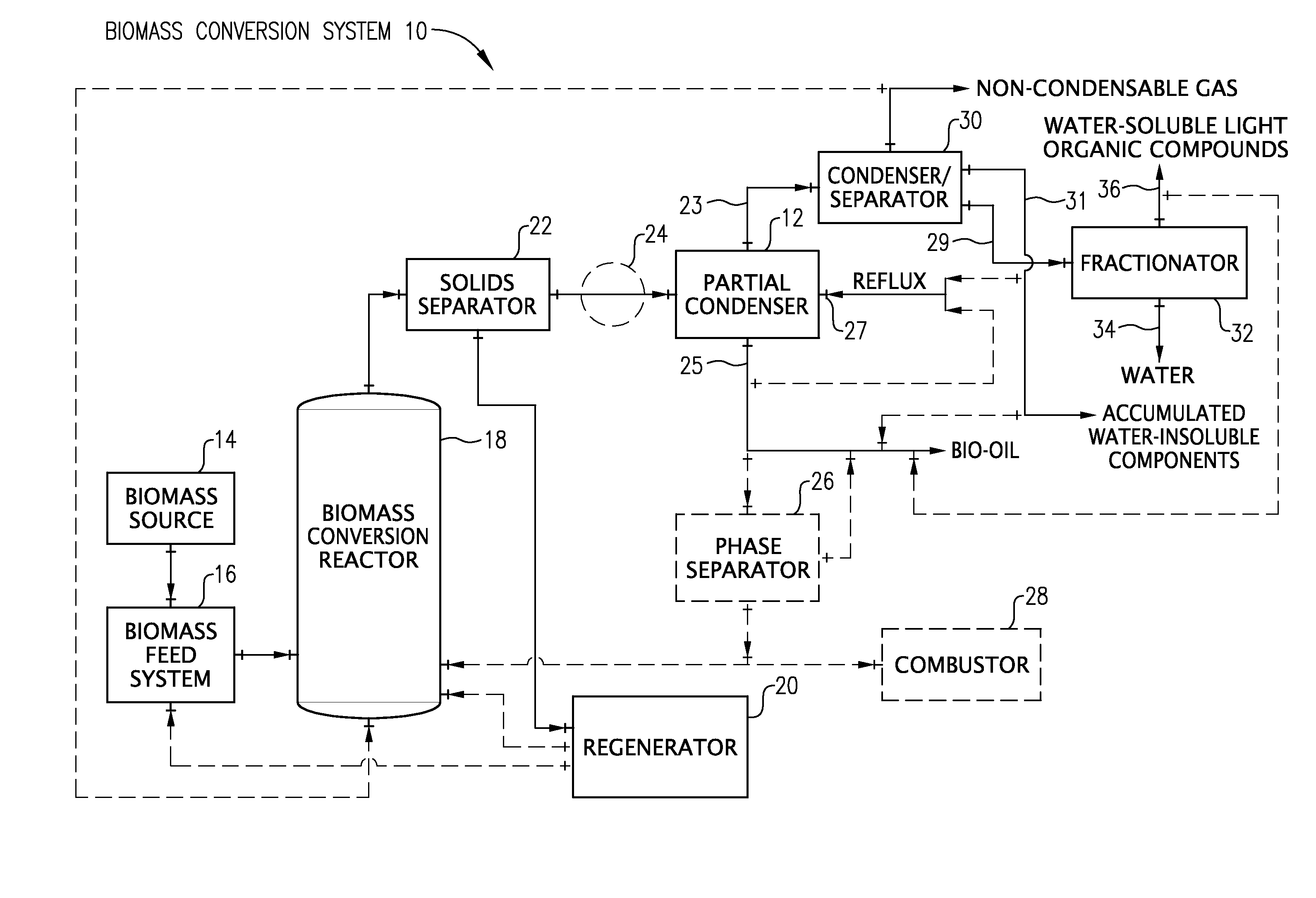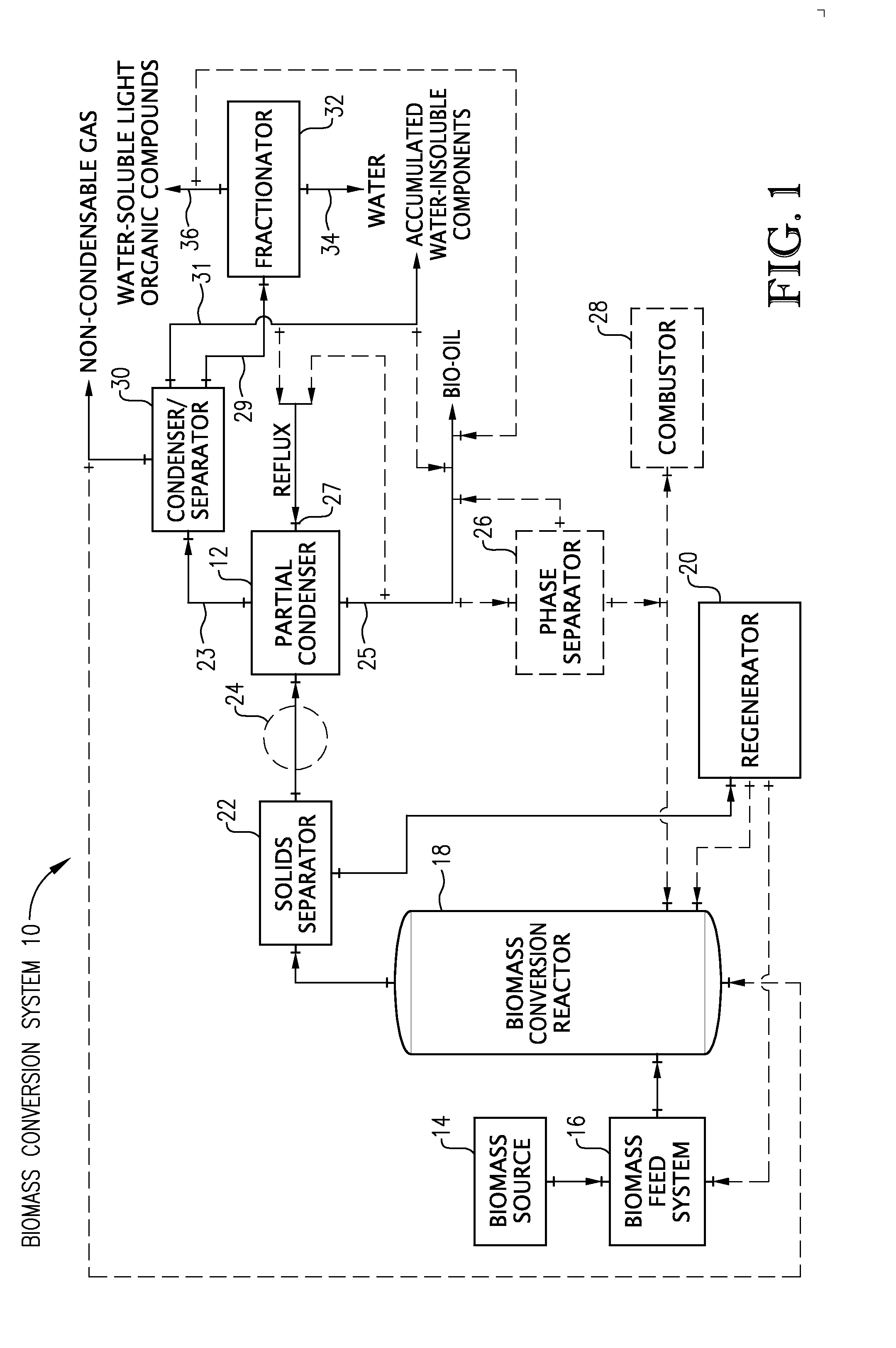Removal of water from bio-oil
a bio-oil and water technology, applied in the field of bio-oil treatment, can solve the problems of requiring extensive secondary upgrading, and reducing the yield of bio-oil,
- Summary
- Abstract
- Description
- Claims
- Application Information
AI Technical Summary
Benefits of technology
Problems solved by technology
Method used
Image
Examples
Embodiment Construction
[0013]FIG. 1 depicts a biomass conversion system 10 that employs a partial condenser 12 to partially condense at least a portion of the vapor conversion products. The streams exiting the partial condenser 12 can then be subjected to further separation and processing in a manner that provides for more effective and efficient removal of water from bio-oil. It should be understood that the biomass conversion system shown in FIG. 1 is just one example of a system within which the present invention can be embodied. The present invention may find application in a wide variety of other systems where it is desirable to efficiently and effectively remove water from bio-oil. The exemplary biomass conversion system illustrated in FIG. 1 will now be described in detail.
[0014]The biomass conversion system 10 of FIG. 1 includes a biomass source 14 for supplying a biomass feedstock to be converted to bio-oil. The biomass source 14 can be, for example, a hopper, storage bin, railcar, over-the-road ...
PUM
| Property | Measurement | Unit |
|---|---|---|
| residence times | aaaaa | aaaaa |
| residence times | aaaaa | aaaaa |
| residence times | aaaaa | aaaaa |
Abstract
Description
Claims
Application Information
 Login to View More
Login to View More - R&D
- Intellectual Property
- Life Sciences
- Materials
- Tech Scout
- Unparalleled Data Quality
- Higher Quality Content
- 60% Fewer Hallucinations
Browse by: Latest US Patents, China's latest patents, Technical Efficacy Thesaurus, Application Domain, Technology Topic, Popular Technical Reports.
© 2025 PatSnap. All rights reserved.Legal|Privacy policy|Modern Slavery Act Transparency Statement|Sitemap|About US| Contact US: help@patsnap.com


